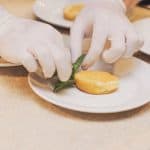With the advent and spread of the novel coronavirus, the restaurant industry is facing an existential crisis. Efforts to stem the tide of contagion have led to restrictions on the movement and interactions of people around the world, resulting in an unprecedented situation in which restaurants have been forced to close their doors to all except take-out and delivery orders.
As the industry and individual restaurants adjust to these changes, they, and the public as a whole, continue to evaluate how best to limit the spread of the disease. On the one hand, with growing numbers of people quarantined in their homes, it would seem that the availability of restaurant delivery would be a welcome, and sometimes necessary convenience. On the other hand, people are understandably wary of strangers bringing outside food into their homes.
So, what can restaurants do to keep customers when their dining rooms are mandated to be closed?
And what are the dos and don’ts that restaurants must follow to ensure the safety of carry-out orders, and how best can they maintain communication with customers to reassure them that, not only is it safe to continue to order from their favorite restaurants, but it’s in everyone’s best interests to support these local establishments as they do their best to survive under seemingly impossible circumstances?
Guidelines continue to be revised and disseminated by the government, the CDC, and other departments of health as more is learned about COVID-19 and its communicability. It’s vital that we all understand and follow these facts and guidelines, but it’s especially important for those preparing and delivering our food.
General facts
Transmission: COVID-19 is known to be transmitted primarily from person to person via droplets produced when an infected individual coughs or sneezes.
While it’s not entirely clear exactly how long the virus can live on surfaces, it is possible that it can be spread by touching a surface that has been recently exposed and then touching your own mouth, nose, or eyes. Of primary concern are hard surfaces. It is not thought that more porous surfaces, such as clothing, are as likely to harbor the virus for any length of time.
There is currently no evidence of food being associated with COVID-19 transmission, according to both the CDC and the Food and Drug Administration (FDA).
Prevention: The best and most effective measures to prevent spread of the disease are social distancing and diligent hand washing. Guidelines for social gatherings have rapidly decreased from 250 to 50 to 10 people over the past week or so, but social gatherings of any kind are now strongly discouraged.
If you must venture out of the home, maintain a safe distance of at least six feet from any other people you encounter, do not shake hands or engage in any other kind of physical contact, and wash your hands thoroughly with soap and hot water upon returning home.
When should I stay home? As a general rule, if you are exhibiting any symptoms, you should not leave home, and you should certainly not go to work.
Guidelines have been somewhat fluid as the experts assess the virus and its spread, with some saying that we should all behave as if we have been infected with the virus and limit our social interactions accordingly.
Certainly, if you have been exposed to someone known to be infected, or, as stated above, if you are exhibiting any symptoms, you should stay home.
Food preparation and delivery
Prep: Fortunately, the standard food prep guidelines with which all food service workers are intimately acquainted should be sufficient to prevent the spread of COVID-19.
Additional measures, such as the wearing of masks while preparing food, are not necessary, as masks are only indicated for those exhibiting symptoms of COVID-19, and anyone exhibiting symptoms should not be working in the first place.
Delivery: The goal in food delivery should be “contactless” delivery. When food is ordered, be sure to get instructions as to where food should be left outside the home so that direct social interaction can be minimized or eliminated.
Any surfaces with which delivery personnel may come into contact should be routinely cleaned and sanitized. This includes door handles, steering wheels, gear shifts, etc. Gloves should be worn and changed each time before the delivery container is handled.
Communicate, communicate, communicate
The best way to minimize fear under such uncertain circumstances as these is to communicate with your patrons as much and as clearly as possible.
Signs posted in your establishment where customers pick up their takeout orders, handouts included with delivery orders, statements on your website, and informative emails are all effective ways to educate and reassure customers that the food they get from you is safe.
The statement above bears repeating:
There is currently no evidence of food being associated with COVID-19 transmission, according to both the CDC and the Food and Drug Administration (FDA).
Proactive communication of this point along with the precautions outlined above should go a long way toward alleviating customer fear when it comes to food takeout and delivery.





